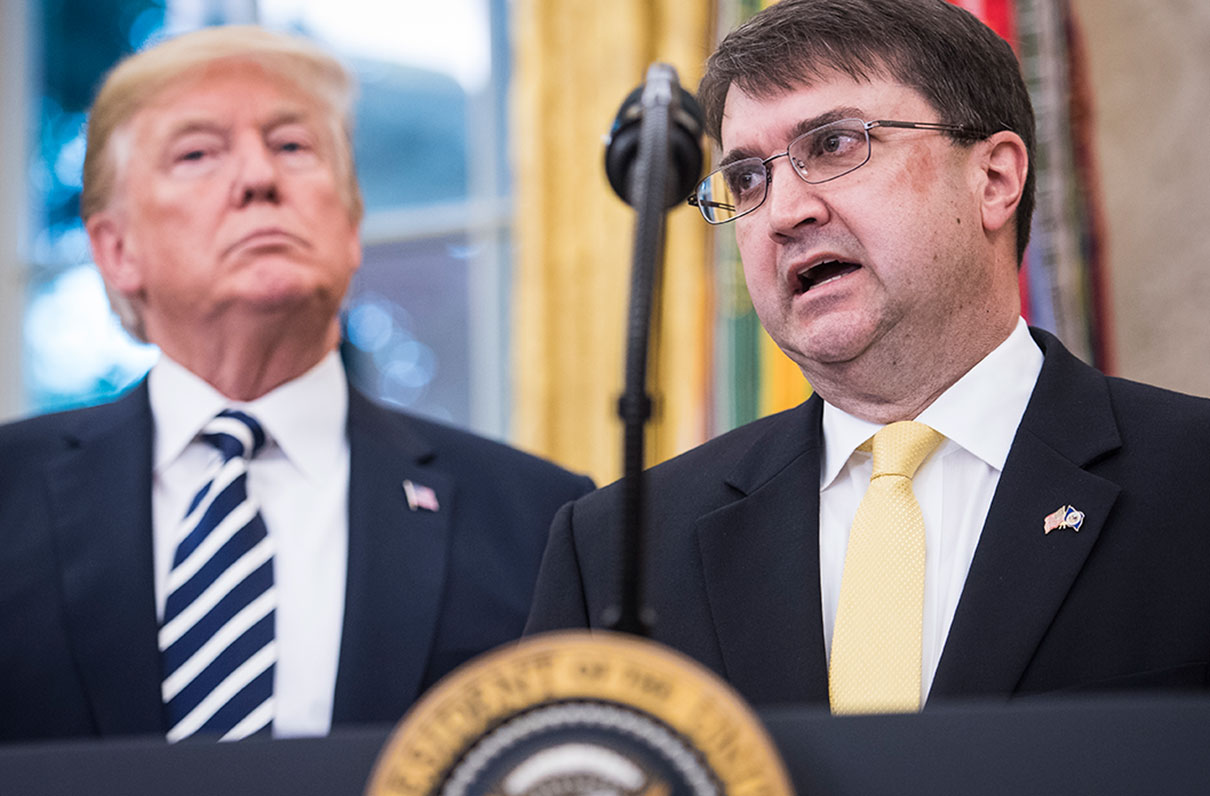A new Secretary is at the helm of the Department of Veterans Affairs (VA) and has a different approach to leading the agency and calming the tumultuous waters rocking the department these days.
Secretary Robert Wilkie, was sworn in on July 31, and brings a warrior and defense agency perspective to the job as a lieutenant colonel in the Air Force Reserve and coming straight to VA from his position as the undersecretary of defense for personnel and readiness.
He sat down with MOAA and other veterans groups on Aug. 21 to discuss his approach to improving health care and benefits delivery to veterans and their families. He also shared his top priorities for the department.
Wilkie said he has a deep appreciation for the opportunity and privilege to lead the agency on behalf of veterans.
In fact, the Secretary keeps a photo of Gen. Omar Bradley in his office to remind him of how the general modernized and restructured VA more than 70 years ago. Bradley was known as “The Soldier's General because of his care of and compassion for the soldiers under his command.”
His Approach
“I don't want to run the VA as a top-down business,” Wilkie told the veterans groups. His vision for VA is to operate as a bottom-up organization, putting decision-making closest to the regional and field facility offices who own these issues and understand the impact of decisions on their veterans.
His first priority is to calm the waters and assure veterans and VA employees he's in the job to stay and convey to them just how serious President Donald Trump is about getting VA right for veterans.
To do so requires a new approach to changing the culture - taking a play from Gen. Bradley's playbook, he wants to remove administrative barriers, cut through the bureaucracy, modernize systems and processes, and increase cooperation and training within the organization so veterans want to come to VA and employees want to work there.
Unlike current business practices, the Secretary isn't in favor of a one-size-fits-all approach. He believes local managers are in the best position to tailor services to their populations and should be managing their own budgets and people to better support the veterans they serve.
He recognizes the huge undertaking and has brought in his own staff from defense to help him with the task. Support from Defense Secretary Jim Mattis and the backing from other defense officials, Wilkie is in a good position to implement his vision and priorities.
Some Of His Priorities
- Improve customer service between VA and veterans, and within the organization itself and eliminate administrative barriers preventing veterans from accessing health care.
- Fix systemic issues across VA through business transformation and address supply chain and contract management problems.
- Reduce VA employee vacancies and provide training and competitive pay to attract and retain quality workforce.
- Secure funding to implement technology solutions to revolutionize VA systems-he sees implementing the new electronic health record contract at the center of his plans for reformation.
